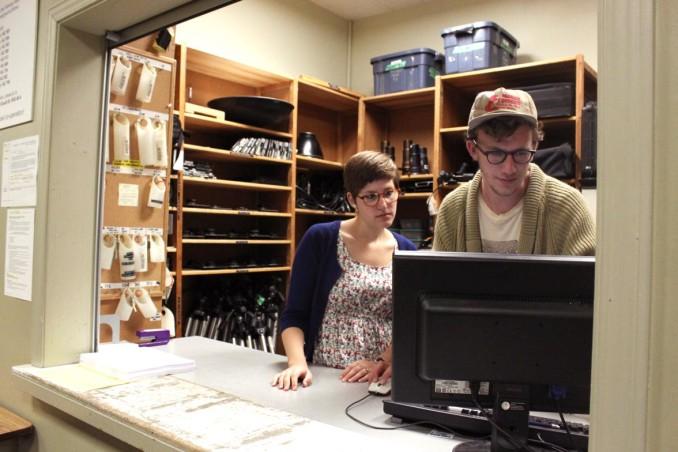Changes to the work-study application process now require students to apply for OSAP and demonstrate a need of at least $1,000 in order to apply. News Editor Rebecca Burton reports
Students applying for work-study positions this year will be slapped with a mandatory application for OSAP in order to get hired.
“We need to ensure that students have demonstrated a financial need,” said Heather Lane Vetere, vice-provost students.
Unlike previous years, students must now go through the OSAP application process, even if not intending to receive it, so the university can better regulate who is in more of a financial need to receive work-study placements.
The minimum shortfall required to have a work-study is $1,000, said Lane Vetere. According to Caitlin Smith, president of the Ryerson Students’ Union (RSU), this is a new policy.
Smith said that last year students who applied for work-study had to fill out a budget sheet administered by the program and, as long as they proved at least a dollar shortfall, they were eligible.
Vetere said the reason for implementing this new program is to ensure that jobs go into the hands of students who need them most, particularly because the provincial government provides the funding.
Students who are not eligible for OSAP will still have a chance to prove financial need to the university, but Smith said the university has not verified what this process would entail.
“I’m trying to correct the rumour that students have to be put on OSAP. You just need to apply and be assessed, but not being eligible doesn’t throw them out,” said Lane Vetere.
Third-year photography student Claudia Puchiele was accepted for a work-study position before this new program was put in place. She was then told she must apply to OSAP in order to be given her position.
“It didn’t make a lot of sense to me,” she said. “The whole process was very nosey.”
Puchiele is now in a four-to-six week wait for OSAP, which she said she doesn’t want.
“Just because I’m not getting OSAP doesn’t mean I don’t need money. I have to pay for food, rent, schooling — that’s thousands of dollars,” she said.
Puchiele is currently waiting in limbo and still working shifts at the cage on the seventh floor of the Victoria building, but unsure when or if she will get paid.
According to Smith, there are significant problems with this new system, one being that the program was implemented so quickly that students didn’t have time to complete the “exhausting and very long” OSAP process.
Fellow third-year photography student Jackson Klie has returned to work at the cage in the Victoria building on work-study but as of late has not had to complete the new OSAP application process.
“I’m assuming I would’ve heard something by now but I didn’t. I’m not entirely sure how that works,” said Klie.
But this is a rare case among returning work-study students who have been approaching the RSU to get assistance, says Smith.
Smith said the other problem is that once a student has finished the OSAP application process, if they are eligible, is that the amount they receive will be added to their income on the work-study application sheet.
If a student’s savings plus the amount they receive from OSAP no longer meets the $1,000 shortfall they would be excluded from the work study program, she said.
“They are basically saying they would rather have students on OSAP than have people working to support themselves,” said Smith.
Administration is arguing that OSAP is a form of financial need but not every student wants to incur thousands in debt once they leave school. Some would rather work, said Smith.
The RSU is collecting stories from students that have experienced problems with the new system and trying to better define what financial assistance really means.











Working Student
The RSU is “collecting stories” — does that include the scores of students they hire, and underpay, through the work-study program?
Perhaps the stories could include the RSU’s active blocking of a unionization campaign for work study students; successful unionization would have resulted in Ryerson having a much harder time playing games with student livelihoods the way they are today.